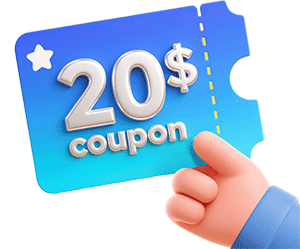What Is M-Commerce?
M-commerce, or mobile commerce, refers to the buying and selling of goods and services through mobile devices such as smartphones and tablets. It is a subset of e-commerce but is specifically optimized for mobile experiences. This includes mobile shopping apps, mobile payment platforms, and even SMS-based transactions.
Whether it's ordering food via an app, paying bills with a mobile wallet, or browsing products on a phone-friendly website, m-commerce has transformed how consumers interact with brands.
The Difference Between M-Commerce and Ecommerce
1. Device Usage
The choice of device shapes the entire shopping experience.
M-Commerce: Primarily accessed through smartphones and tablets; optimized for touchscreens, voice input, and camera-based functions like QR scanning.
E-Commerce: Typically used on desktops and laptops; navigation depends on mouse and keyboard, with layouts built for larger screens.
2. User Behavior Patterns
Mobile and desktop users behave differently when making purchase decisions.
M-Commerce: Users often shop during idle or on-the-go moments—short sessions, quick decisions, and impulse buys are common.
E-Commerce: Users are more deliberate, spending time comparing products, reading reviews, and making planned purchases.
3. Feature & Technology Integration
Integration with device capabilities defines how rich and interactive the experience can be.
M-Commerce: Leverages built-in smartphone features such as GPS, biometric authentication, push notifications, and mobile cameras.
E-Commerce: Limited to browser capabilities; less integrated with hardware features, offering a more traditional shopping interface.
4. Payment Methods
The payment process greatly affects conversion rates and user trust.
M-Commerce: Supports mobile wallets (Apple Pay, Google Pay), one-click payments, and fingerprint or facial authentication for seamless checkout.
E-Commerce: Relies on more conventional methods like credit/debit cards, bank transfers, or third-party processors like PayPal.
5. Personalization & Marketing Tools
Each platform offers different levels of real-time personalization.
M-Commerce: Enables dynamic, location-based push notifications and in-app messages tailored to individual behaviors.
E-Commerce: Uses email marketing, web-based ads, and SEO; personalization is slower and typically based on past behavior rather than real-time triggers.
6. Accessibility & Global Reach
Ease of access can determine success in mobile-first or developing markets.
M-Commerce: More accessible in regions with high mobile penetration but limited desktop access; requires only a smartphone and cellular data.
E-Commerce: Dependent on stable internet and access to a desktop or laptop; more prevalent in regions with developed infrastructure.
Advantages of M-Commerce
- Convenience: Users can shop anytime, anywhere with just a smartphone—eliminating time and place restrictions.
- Speed: Mobile-optimized apps and checkout systems reduce friction in the buying process.
- Personalization: Utilizes user behavior, preferences, and location for targeted promotions and content.
- Push Notifications: Provides immediate engagement through alerts about sales, cart reminders, or order updates.
- Wider Reach: Reaches consumers who may not frequently use desktops or laptops, especially in mobile-first regions.
- Seamless Payment Options: Integrated digital wallets and one-tap payments speed up transactions securely.
Ways to Improve M-Commerce Experience
Optimize Mobile App and Website Performance
Fast load times are critical. Users expect mobile platforms to respond instantly—delays of even a few seconds can lead to abandoned carts. Invest in lightweight design, efficient caching, and server-side optimizations to ensure quick, smooth performance across all devices.
Simplify the Checkout Process
Complicated forms and multi-step checkouts can frustrate users. Implement one-click purchasing, autofill capabilities, and guest checkout options to streamline the process. Reducing friction at this stage is key to boosting conversions.
Enhance Mobile Payment Integration
Support multiple mobile payment methods like Apple Pay, Google Pay, and PayPal. The more payment flexibility you offer, the more accessible and trustworthy your platform becomes to a wider audience.
Use Personalized Push Notifications Wisely
Rather than sending generic alerts, tailor push notifications based on user behavior, browsing history, or cart activity. Personalized messaging boosts engagement without overwhelming the user.
Ensure Secure Transactions
Security builds trust. Use SSL encryption, biometric authentication (like fingerprint or face recognition), and clearly communicate data protection policies. Visible security badges and trust indicators can ease user concerns during checkout.
Focus on Responsive Design and UX
Mobile design should prioritize finger-friendly buttons, intuitive navigation, and clean layouts. Use responsive frameworks that adjust smoothly to different screen sizes and orientations, ensuring a consistent experience across devices.
FAQs
An example of mobile commerce?
Ordering food through a mobile app like Uber Eats or DoorDash is a great example of m-commerce—it's quick, done entirely on your phone, and includes browsing, ordering, and payment.
What are the 3 types of m-commerce?
The three main types are mobile shopping (like shopping apps), mobile banking (managing finances via apps), and mobile payments (using digital wallets or QR codes to pay instantly).
What's the future of m-commerce?
M-commerce will keep growing with faster apps, AI-based personalization, and better mobile payments. Expect even more businesses to go mobile-first as user behavior continues to shift.


























